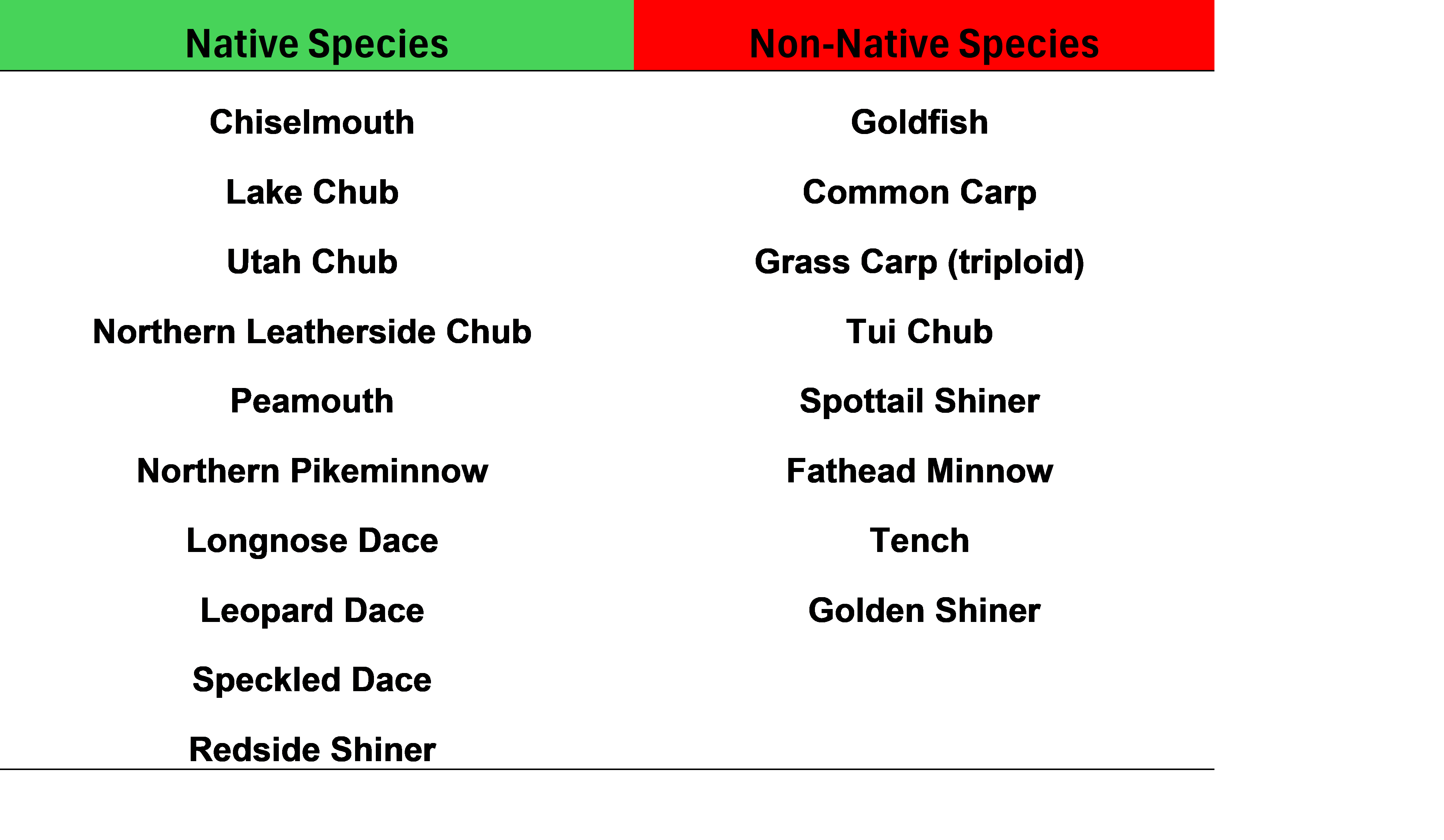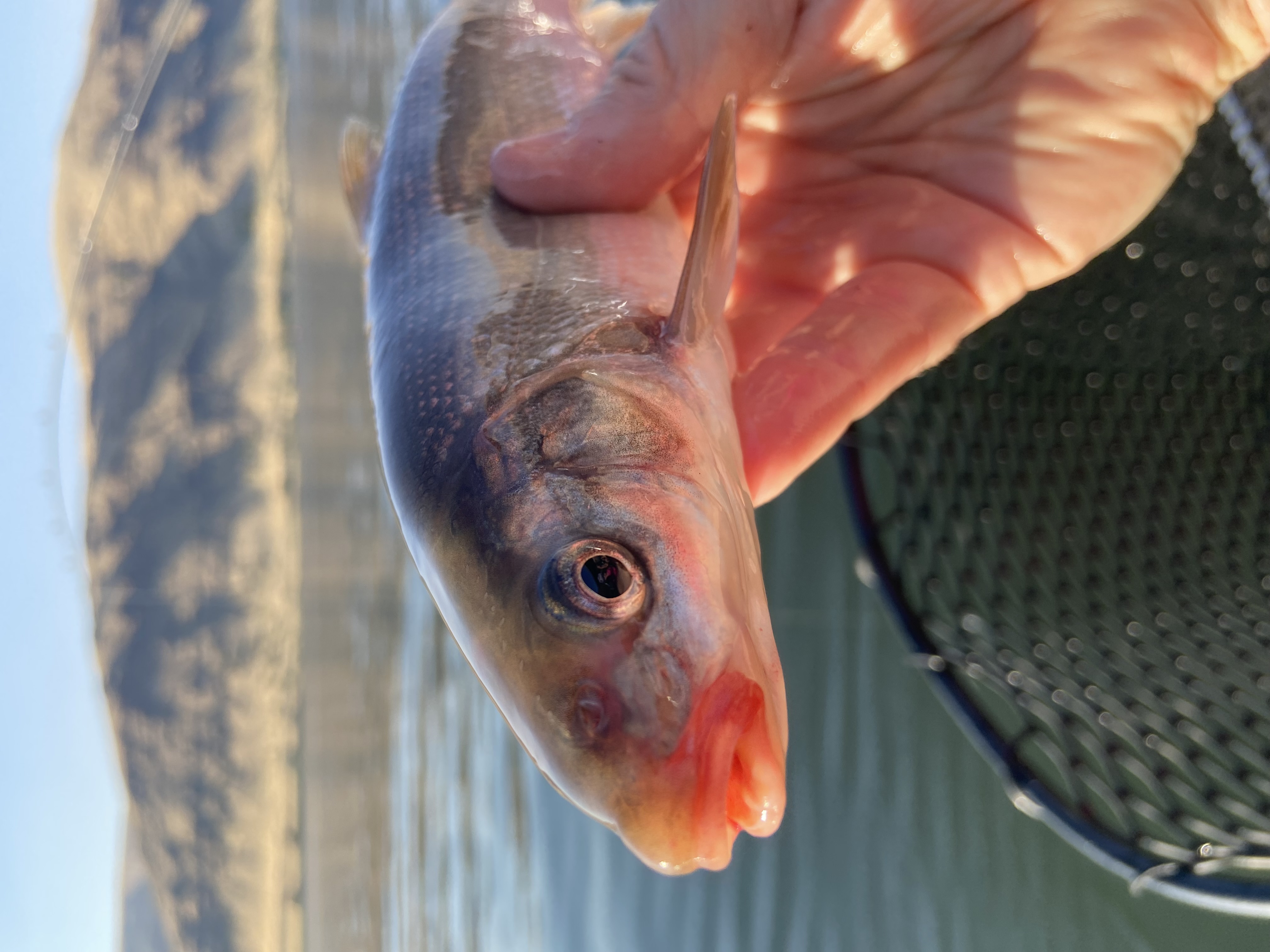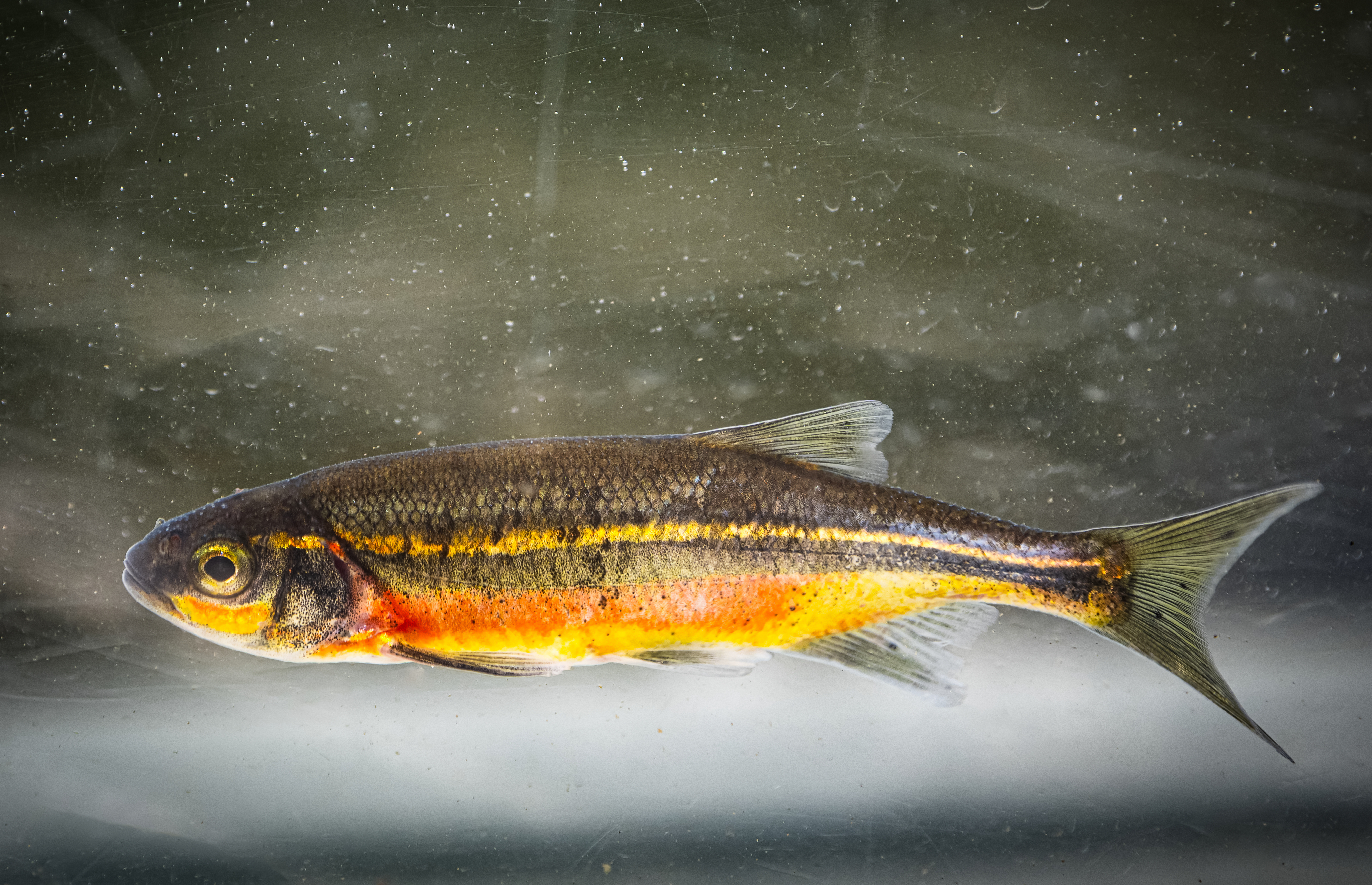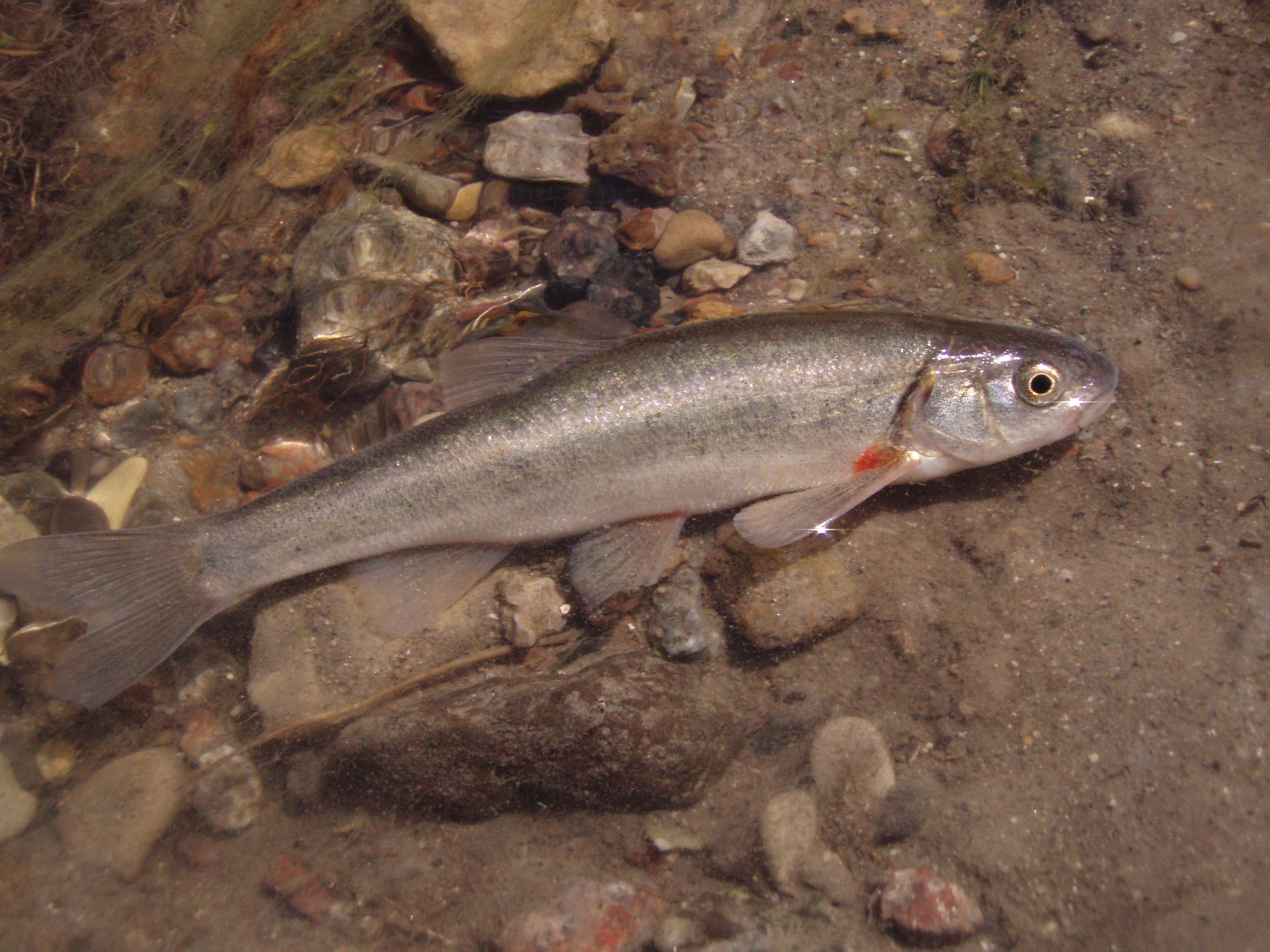We’ve talked about sculpin, we’ve talked about suckers, for our last installment of “Live in Idaho Waters” were going to discuss native minnows. A ‘minnow’ is sometimes used as a generic term for any small fish swimming around in a lake or stream, in reality, the term minnow applies to a specific category of fish. Understanding minnows in Idaho gets a little more complicated than that for two reasons: 1) we have more native minnows in Idaho than any other category of native non-game fish, and 2) unlike sculpin and suckers, we do have non-native minnow species in Idaho. So first and foremost, let’s establish who’s who. Check out the table below for a quick reference for our native vs. non-native minnow species.

Live in Idaho Waters (Part 3): Native Minnows

Just to make this a little more complicated, there was another minnow species discovered for the first time in Idaho during a BYI-Idaho class field trip in 2021, the Least Chub. We are working with folks to analyze the origin of this newly discovered fish to determine if they should be counted in the native or non-native column of the table.
Basic Life History:
Since Idaho’s native minnow species include a diversity of species, it’s not unexpected that there is also a diversity of life history characteristics. They can get big, like the Northern Pikeminnow (state catch and release record is 27 inches!) and can be quite small like Speckled Dace, which rarely exceed 3 inches. These big size differences are partially caused by different maximum ages with some living up to 15-20 years and others rarely living past their 3rd birthday.

Native minnows are late-spring to summer spawners similar to many of Idaho’s other native non-game species. Like mentioned in the sucker article, some minnow species like Peamouth and Redside Shiner develop brilliant spawning stripes that fade post-spawn. Small species like dace may only lay a few hundred eggs and larger species (Utah Chub, Northern Pikeminnow, and Peamouth) can lay in the tens of thousands of eggs. Most minnow species spawn and leave the eggs and young to fend for themselves, while dace species (and usually the males) stick around to protect the next generation till they start swimming around on their own.
When it comes to diet, most minnow species are eating the small stuff. Whether zooplankton (microscopic organisms in the water), aquatic bugs (caddisflies, mayflies, and stoneflies) or even algae. But don’t let the minnow name fool you, they can be higher up on the food chain. In Idaho, this is true for the Northern Pikeminnow. This minnow predominately eat other fish especially when they reach larger sizes. This has made them subject to a bounty system in a number of areas in the Lower Snake and Columbia rivers where they overlap with salmon and steelhead.

Why we care?:
The role our native non-game fish minnows play in sustaining fisheries is often under appreciated. They are definitely a prey source for our gamefish populations and terrestrial animals which utilize our lakes and streams for feeding. Without them in our lakes and streams our fisheries would look a lot different and our gamefish would be more likely to prey on smaller gamefish, rather than minnows. Similar to other non-game fish, minnows also move energy up the aquatic food web and serve an important role as predator of the small stuff, and prey for the larger stuff like gamefish.
Along those lines, in many parts of the country a variety of minnow species are used for bait by anglers, but please remember, don’t do this in Idaho. It is illegal to use or transport live fish for bait in any part of the Gem State. It is also illegal to transport and move gamefish from one waterbody to another. Illegal introductions of gamefish and baitfish can have catastrophic consequences for how a fishery functions. If IDFG introduces a new species to a waterbody, it is only after extensive evaluation of potential effects on the existing fishery.

There is a lot we don’t know about these Idaho native minnows and other native non-game fish in general, but we’re learning. Hopefully the “Live in Idaho Waters” articles have taught you a little bit more about these cool Idaho natives. IDFG is placing more emphasis on learning about native non-game fish and is in the process of developing conservation projects. This wouldn't be possible without funding devoted to native non-game fish work through novelty license plate sales in Idaho. When you purchase a novelty plate for your car or truck around 70% of the price goes towards non-game work, which includes native non-game fish projects. These funds are being focused on native non-game fish we have concerns about or know the least about. Having a funding source devoted to these non-game critters means we are able to learn more about them and better preserve and protect them into the future.
Keep an eye out for more native non-game fish project updates in the future as we continue to learn about the fishes that “Live in Idaho Waters”.
Live in Idaho Waters
